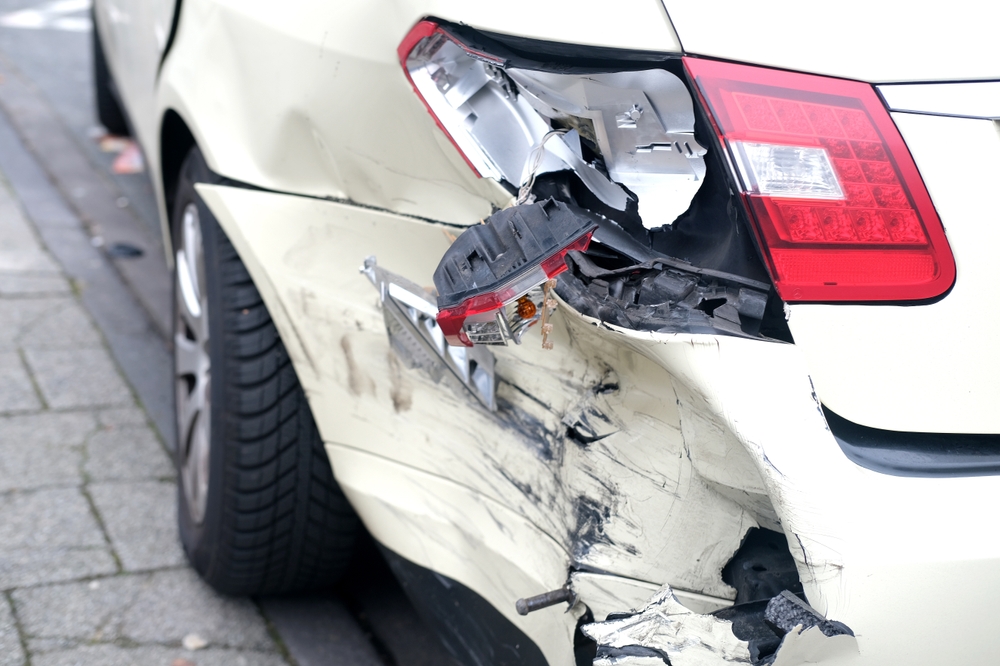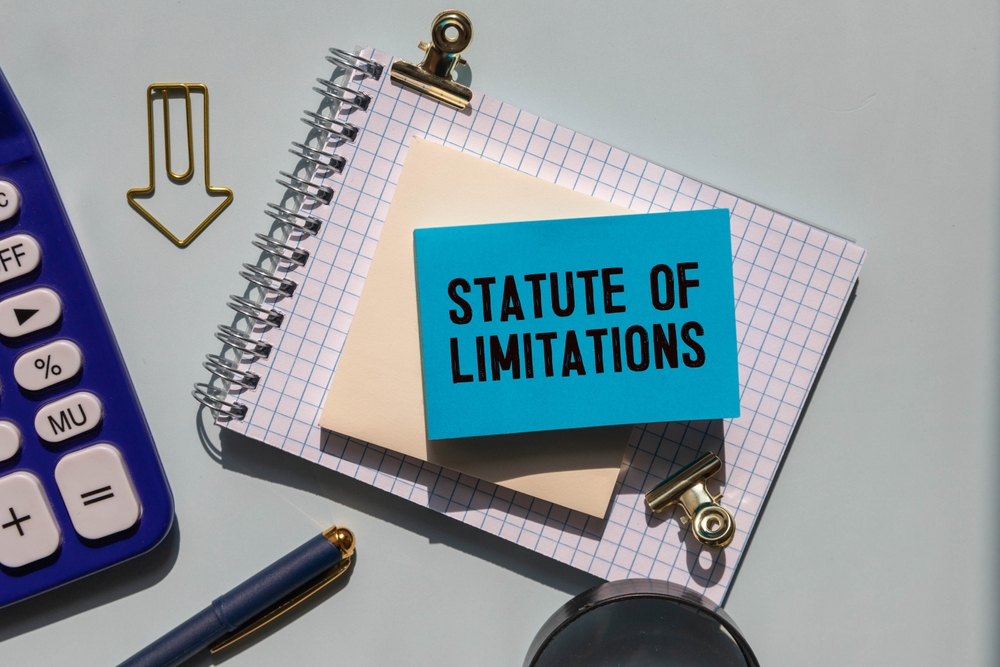One minute you’re cruising, and the next—twisted metal, flashing lights, and the sudden, unwelcome realization that your day, week, or even year just took a sharp detour into Bureaucracy Hell.
After the dust settles and the adrenaline fades, a different kind of clock starts ticking. It’s the legal one, the statute of limitations. In Illinois, if a car accident injured you, the state generally gives you two years from the accident date to file a lawsuit. For damage to your vehicle or property, it’s usually five years.Miss these deadlines, and your chance to hold the responsible party accountable car accident lawyer legally evaporates.
Don’t let a calendar technicality derail your recovery. If you’ve been tangled up in an Illinois car accident, figure out where you stand now. Give Walner Law a call at (312) 410-8496 to talk things through.
Understanding the Ticking Clock: What is a Statute of Limitations Anyway?
What’s the big deal with this “statute of limitations“? Think of it as the legal system’s way of saying, “Look, you can’t just sit on a potential lawsuit forever.” It’s a deadline set by law that dictates how long you have to initiate legal proceedings after something bad happens – in this case, a car wreck.
The main reasons for these deadlines are:
- Fairness to Defendants: People shouldn’t have the threat of an old lawsuit hanging over their heads indefinitely. Memories fade, evidence disappears, and defending a claim from years ago gets incredibly difficult.
- Evidence Preservation: The sooner a claim starts, the fresher the evidence. Witness recollections are clearer, vehicle damage is easier to assess before repairs or decay, and accident scene details haven’t been completely obliterated by time and traffic.
- Judicial Efficiency: Courts need closure. Allowing ancient claims to clog the system isn’t practical.
In Illinois, the specific laws laying out these time limits for car accident claims are primarily found in the Illinois Compiled Statutes (ILCS). Here are the heavy hitters you need to know:
- Personal Injury: If you got hurt – broken bones, whiplash, concussion, anything affecting your physical well-being – you generally have two years from the date the accident happened to file a lawsuit. This is laid out in 735 ILCS 5/13-202. This deadline applies whether you were a driver, passenger, pedestrian, or cyclist hit by a car.
- Property Damage: If the accident only messed up your car or other belongings (laptop in the trunk, etc.), you usually have five years from the accident date to sue for repairs or replacement costs. Check out 735 ILCS 5/13-205 for this one.
- Wrongful Death: If the unthinkable happened and someone died because of the accident, the lawsuit generally needs to be filed within two years from the date of the person’s death, according to 740 ILCS 180/2.
Let’s be clear: these deadlines are strict. If you stroll into court two years and one day after your injury accident, the person you’re suing (the defendant) can simply ask the judge to toss the case out based on the statute of limitations. And guess what? The judge will almost certainly agree. You had your window; you missed it. Game over for that lawsuit.
When Does the Clock Actually Start Punching In?

The deadlines seem straightforward enough—two years for injuries, five for property damage. But life loves throwing complications into the mix. The critical question becomes: when does that two-year or five-year countdown officially begin?
The General Rule: The Day It Happened
Most of the time, it’s simple. The clock starts ticking on the date of the accident. If someone T-boned you on April 15th, 2025, your two-year deadline for an injury lawsuit typically ends on April 15th, 2027. Your five-year property damage deadline would end on April 15th, 2030. Pretty basic.
The Plot Twist: The “Discovery Rule”
But what if you didn’t realize you were injured right away? Car accidents can cause injuries that don’t scream for attention immediately. Maybe you felt shaken up but okay, only to develop severe back pain weeks later that doctors trace back to the crash. Or perhaps an internal injury simmered unnoticed until symptoms flared up months down the line.
This is where the “Discovery Rule” can sometimes come into play in Illinois. This legal principle says that the statute of limitations clock doesn’t start running until the date you knew, or reasonably should have known, about the personal injury and that it might have been caused by someone else’s wrongful act (like the accident).
Let’s illustrate:
- Scenario: Accident on January 1st. You felt sore but thought it was minor. By March 1st, you have debilitating neck pain. A doctor diagnoses a herniated disc on March 15th and links it directly to the crash forces.
- Possible Application: Under the Discovery Rule, your two-year clock might start ticking from March 15th (when you discovered the specific injury and its likely cause), not January 1st.
Sounds great, right? A potential loophole! Well, hold your horses. Relying on the Discovery Rule is tricky:
- “Reasonably Should Have Known”: This is subjective. The other side will argue you should have known earlier if you’d been reasonably diligent about checking your health after the crash.
- Not Universal: It doesn’t apply to every situation, and its application can be complex, often requiring legal argument. While common in medical malpractice, its use in standard car accident injury cases needs careful evaluation.
- Statute of Repose: Illinois also has “statutes of repose” for some types of cases (like medical malpractice or product liability related to defective car parts) which set an absolute outside deadline, regardless of when the injury was discovered. For example, the medical malpractice statute of repose is generally four years from the act causing injury (735 ILCS 5/13-212). While less common for typical car crash negligence claims, it highlights that the Discovery Rule isn’t a blank check.
The bottom line on the Discovery Rule: It exists, it might help if your injury had a genuine delayed onset and discovery, but don’t bank on it without solid legal advice. Acting as if the clock started on the accident date is always the safest bet.
Exceptions That Can Pause the Clock
Just when you think you’ve got the deadlines figured out, the law throws in some exceptions – situations where the statute of limitations clock might be “tolled,” which is legal speak for paused. But treat these like rare bonus points in a video game: nice if you get them, but don’t build your entire strategy around them. They’re specific and don’t apply to most people.
Here are the main ones relevant to Illinois car accidents:
- Injured Person is a Minor (Under 18):
- If the person injured in the accident is under 18 years old at the time of the crash, the standard two-year clock doesn’t start running immediately.
- Instead, the law typically gives them two years after they turn 18 to file their lawsuit (735 ILCS 5/13-211(a)).
- Example: A 16-year-old is injured in a crash on June 1, 2025. They turn 18 on September 10, 2026. Their deadline to file suit would likely be September 10, 2028 (two years after their 18th birthday).
- Important Note: This generally applies to the minor’s claim. If parents have their own related claims (like for medical expenses they paid), those might still be subject to the standard two-year deadline from the accident date.
- Injured Person Has a Legal Disability:
- If the injured person is legally disabled at the time the accident happens (e.g., in a coma, declared legally incompetent due to a pre-existing condition), the statute of limitations is usually tolled.
- The clock starts running only after the disability is removed (e.g., they regain consciousness and competency). They then typically get two years from that point (735 ILCS 5/13-211(a)).
- What if the disability happens after the accident but before the two years are up? The clock might pause while the disability lasts (735 ILCS 5/13-211(b)). This gets complicated fast.
- Defendant Skips Town:
- If the person responsible for the accident leaves Illinois after the accident with the likely intent of avoiding the lawsuit, the time they are gone might not count against the two-year deadline (735 ILCS 5/13-208). Proving they left to avoid the suit can be challenging, though.
- Fraudulent Concealment:
- If the person liable for the injury actively and fraudulently hides the fact that you have a reason to sue them, you might get extra time – potentially up to five years from when you discover the cause of action (735 ILCS 5/13-215). This is rare in typical car accidents unless there was some truly deceptive cover-up involved.
Relying on these exceptions is risky business. Proving the conditions for tolling are met often requires significant evidence and legal argument. The smartest approach? Assume the standard deadline applies and act well within that timeframe.
Suing the Government? Buckle Up for Shorter Deadlines and Extra Hoops
Dealing with bureaucracy is rarely fun. Trying to sue a government entity after a car accident adds extra layers of complexity and, crucially, shorter deadlines. If your accident involved a city bus, a state-owned vehicle, a county road maintenance truck, or any other government-related entity or employee acting within their job scope, the standard rules get tossed out the window.
You need to be aware of the Local Governmental and Governmental Employees Tort Immunity Act (745 ILCS 10/). This law sets specific rules for claims against local public entities (like cities, counties, park districts, etc.) and their employees.
The big takeaway? The statute of limitations is drastically shorter:
- One Year for Most Injuries: Instead of the usual two years, you generally have only one year from the date of injury or when the cause of action accrued to file a lawsuit against a local government entity or its employee for most types of injuries (745 ILCS 10/8-101(a)).
Wait, there’s more red tape:
- Notice Requirements: Historically, there were strict requirements to provide formal written notice to the government entity within a very short timeframe (sometimes 6 months) before even filing the lawsuit. While some rigid notice provisions have faced legal challenges, the underlying principle remains: prompt notification is often expected, and specific procedures might still apply depending on the entity. Missing these can potentially jeopardize your claim even if you meet the one-year lawsuit deadline. Suing the State of Illinois itself involves different rules again, often requiring claims to be filed in the Illinois Court of Claims, potentially with a one-year notice requirement to the Attorney General and the Court Clerk, followed by a two-year lawsuit deadline (705 ILCS 505/22-1).
The Point: If a government vehicle or employee was involved in your accident, the timelines shrink dramatically, and procedural steps multiply. You absolutely cannot afford to wait. Get legal advice immediately to figure out the specific deadlines and notice requirements for the particular government body involved. Messing this up usually means your claim is dead on arrival.
Why Dragging Your Feet is a Terrible Idea (Even with Time on the Clock)

So, you know the deadlines. Two years for injury, five for property damage (unless it’s the government, then it’s faster). You might think, “Great, I’ve got plenty of time.” Wrong mindset. Just because you have time doesn’t mean you should use all of it before taking action. Acting quickly after a car accident is smart for reasons that go way beyond just meeting the final deadline.
Here’s why procrastinating hurts your potential claim:
- Evidence Fades Faster Than Your Patience in Traffic:
- Witness Memory: People forget details. What a witness clearly remembers a week after the crash might become a hazy blur six months later. Getting their recorded statements early locks in their account.
- Physical Evidence: Skid marks wash away. Vehicle damage might get repaired (by either party) before it’s properly documented. Nearby security camera footage often gets overwritten within days or weeks. The accident scene itself changes. Prompt investigation preserves this stuff.
- Investigation Gets Harder: The longer you wait, the colder the trail gets for anyone investigating on your behalf. Tracking down witnesses becomes tougher. Getting accurate vehicle inspections is more difficult. Reconstructing the accident relies more on memory and less on hard evidence.
- Negotiation Takes Time: Ideally, you want to settle your car accident claim with the insurance company without needing a full-blown lawsuit. But negotiation isn’t instant. It involves gathering records, sending demand letters, back-and-forth offers, and potentially mediation. Starting this process early leaves ample time for negotiation before the lawsuit deadline forces your hand. Rushing negotiations at the last minute rarely leads to the best outcome.
- Reduces Last-Minute Stress: Scrambling to gather documents, find an attorney, and file a lawsuit weeks before the deadline is a recipe for anxiety and potential mistakes. Giving yourself and your attorney plenty of runway makes the process smoother and less frantic.
- Shows You’re Serious: Prompt action signals to the insurance company that you’re pursuing the claim diligently. Delays can sometimes be interpreted (rightly or wrongly) as a lack of conviction about the claim’s validity or the severity of the injuries.
Think of it this way: The statute of limitations is the absolute final whistle. But the game starts the moment the accident happens. Playing smart means getting off the bench and onto the field right away, not waiting until the last two minutes of the fourth quarter.
Don’t Let the Clock Beat Your Claim
Figuring out these timelines, exceptions, and how they apply to your specific situation is exactly why you should talk to someone who deals with personal injury attorney this day in and day out. Let Walner Law handle the clock-watching so you can focus on recovery.
Call us today at (312) 410-8496 for a consultation.


 Skip to content
Skip to content




